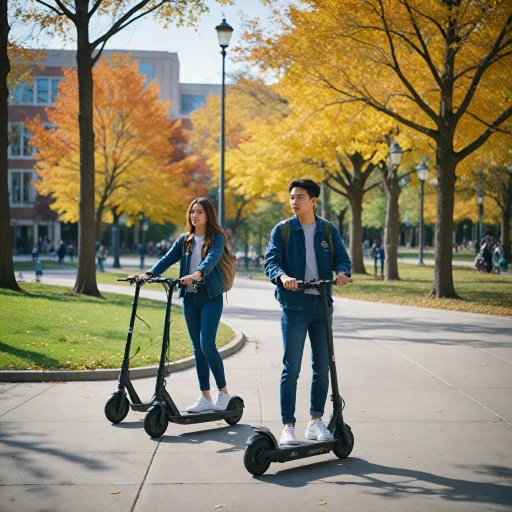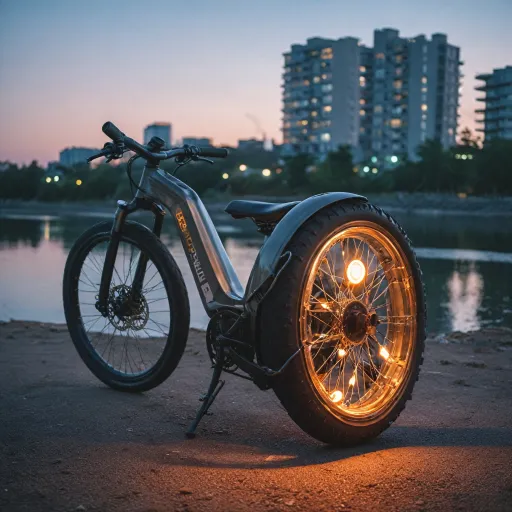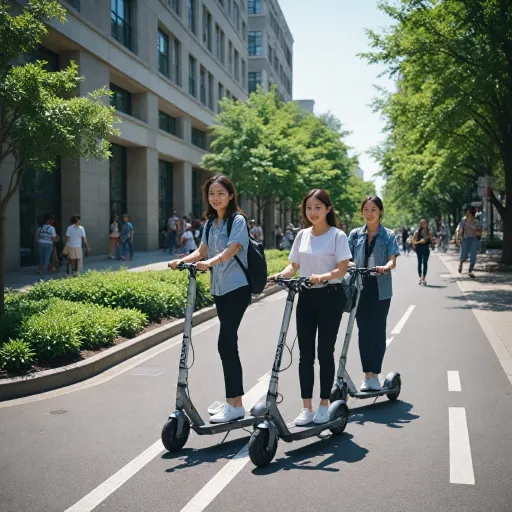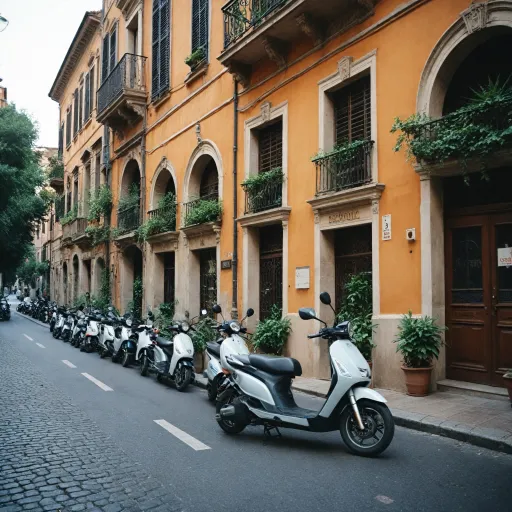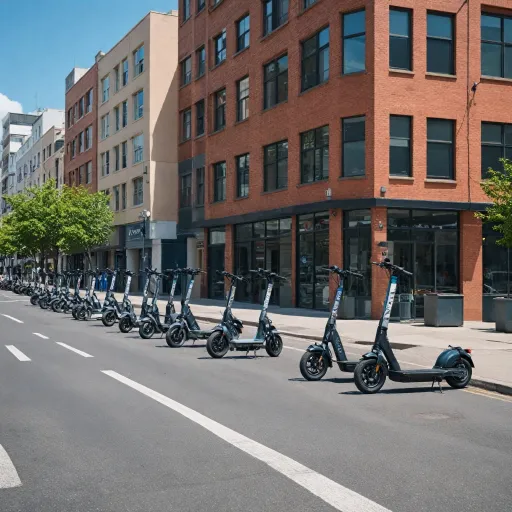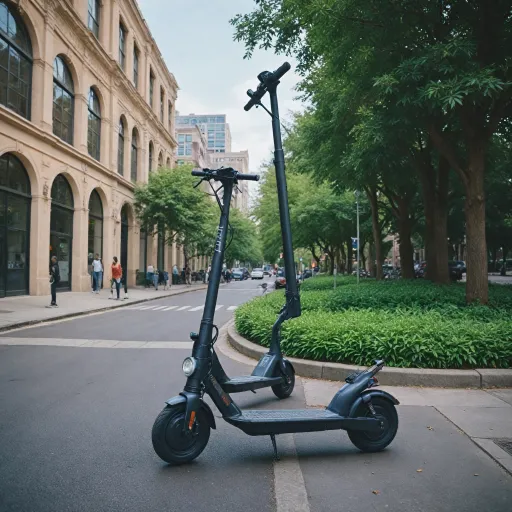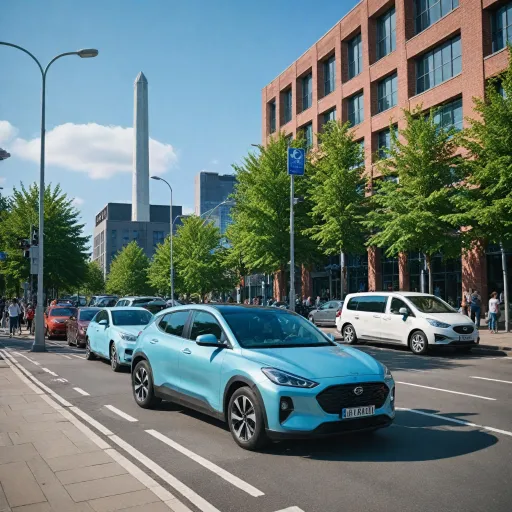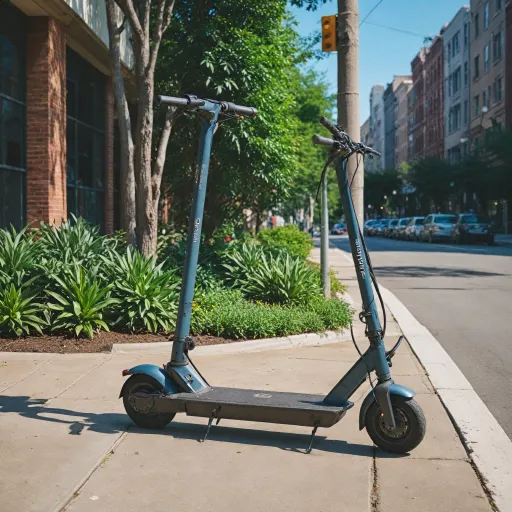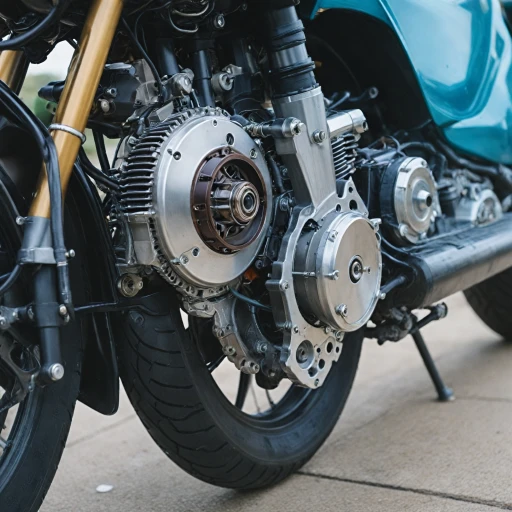
What is an E-Scooter Throttle?
When delving into the dynamic world of electric scooters, one component emerges as crucial yet often overlooked—the throttle. The throttle serves as the primary control device that dictates the speed of your electric scooter, offering riders a seamless connection between their hand movements and the scooter's speed control.
One Hand, Two Essential Types: Thumb and Twist
An electric scooter throttle can generally be categorized into two primary types: the thumb throttle and the twist throttle. The thumb throttle is positioned on the handlebar, requiring riders to use their thumb to engage the speed. Typically seen in a black casing, this type is common in entry-level scooters due to its intuitive control. On the other hand, the twist throttle, akin to a motorcycle grip, demands a twisting motion of the entire hand to accelerate. Both types provide effective speed throttles but cater to different ergonomic preferences.
The interaction with your scooter's throttle occurs through the use of a grip mechanism. The twist throttle constitutes a major part of this, offering a long throttle experience for users who prefer a more controlled, graduated acceleration. Not only do these twist throttles offer more traditional feel akin to riding a motorbike, but they also provide a tactile feedback that many riders appreciate.
Understanding these scooter parts is essential for both the novice and expert rider. Knowing whether a thumb or twist throttle suits you affects your ride comfort and throttle speed control, potentially saving you time and effort in adjusting to your scooter.
For those looking to explore more about scooter mechanics and how they impact understanding the speed of electric scooters, taking the leap into the intricate world of throttles offers a deeper insight into everyday electric travel.
Types of E-Scooter Throttles
Exploring Different Types of Throttles for E-Scooters
The electric scooter throttle is a vital scooter part that allows riders to control the speed effectively. When it comes to the types of throttles available for electric scooters, users are presented with several options, each having its unique set of features and advantages. Here’s a closer look at the most popular types:
- Thumb Throttle: This type is known for its compact design, allowing users to control the scooter speed with just a push of the thumb. It's typically installed on the handlebar and is favored for its easy access and precise speed control. Many riders prefer the thumb throttle due to its low price and ergonomic design. However, it's essential to understand that constant thumb pressure can become uncomfortable on long rides.
- Twist Throttle: Commonly seen on motorcycles, the twist throttle requires a twisting motion of the hand grip to control the scooter's acceleration. This throttle type provides a seamless control experience and is preferred by riders looking for a more traditional feel. It's crucial to ensure that the cable and connector are properly maintained for smooth operation.
- Trigger Throttle: Located on the handlebar like a bike shifter, the trigger throttle is operated using your index finger. This type is known for its affordability and ease of use, offering riders a responsive and direct way to manage their speed. It's important to note that using a trigger throttle for extended periods can lead to finger fatigue.
Choosing between these types can significantly affect your riding experience. Some riders may prioritize comfort and ease of control, such as with the thumb throttle, while others may desire the robustness of a twist throttle. For a deeper understanding of the interplay between speed controller and throttle, consider reading more about the power behind electric scooter motors.
How to Choose the Right Throttle for Your E-Scooter
Choosing the Perfect Throttle for Your Ride
When selecting the ideal throttle for your electric scooter, understanding the different throttle types is crucial. From controlling speed to enhancing comfort, the choice you make can significantly impact your riding experience. Throttles come in various designs, each suited to different preferences and needs.- Thumb Throttles: These are quite popular due to their ergonomic design. Operated by pressing a lever with the thumb, they offer seamless speed control. If you're considering upgrading scooter parts for enhanced handlebar ergonomics, the thumb throttle could be an optimal choice.
- Twist Throttles: Reminiscent of a motorcycle handle, twist throttles allow control by rotating the handlebar grip. They are favored for their intuitive operation and are available in models with long or standard grips. Perfect for riders accustomed to traditional motorcycles.
- Trigger Throttles: These require pulling a trigger with the index finger, offering precise throttle sensitivity. They're especially beneficial if you need quick acceleration or deceleration.
- Comfort and Ergonomics: Ensure the throttle you choose suits your hand size and riding preferences. Extended use of throttles like the twist type might require developing arm strength.
- Compatibility and Install Ease: The throttle connector and cable should match your existing scooter's speed controller. Simplify the installation with compatible connectors.
- Price and Quality: Throttle prices vary widely. Balancing budget with quality ensures longevity and reliability, making it a crucial item in your scooter parts consideration.
Common Throttle Issues and Troubleshooting
Identifying and Resolving Throttle Issues
Electric scooter throttles are crucial for controlling speed, but like any mechanical component, they can encounter issues. Recognizing these problems early can save you from costly repairs and ensure a smooth ride. Here are some common throttle issues and how to troubleshoot them:
- Unresponsive Throttle: If your scooter throttle isn't responding, check the connector and cable connections. Loose or damaged connections can disrupt the speed control. Ensure the controller is functioning properly.
- Inconsistent Speed: An erratic speed throttle can be due to a faulty throttle grip or trigger throttle. Inspect the handlebar for wear and tear. Sometimes, a simple adjustment or replacement of the thumb throttle or twist throttle can resolve the issue.
- Stuck Throttle: A throttle accelerator that sticks can be dangerous. This might be due to dirt or debris in the throttle type mechanism. Clean the grip and trigger areas thoroughly and ensure the cable moves freely.
- Throttle Not Returning to Zero: If the throttle electric doesn't return to zero when released, it could be due to a worn spring or black item inside the throttle. Replacing these parts can restore proper function.
Regular maintenance and understanding the different scooter parts can prevent these issues. For more detailed guidance, refer to the maintenance tips section, which provides insights into keeping your electric scooter in top shape.
Maintenance Tips for E-Scooter Throttles
Maintain Optimal Throttle Performance
To ensure your electric scooter's throttle continues to function smoothly, regular maintenance is key. Whether you own a thumb throttle or a twist throttle, consistent care can prevent potential issues and extend the lifespan of the scooter throttle.- Regular Inspection: Frequently check the throttle grip, looking out for signs of wear or damage. This includes cracks in the handlebar area or any issues with the throttle accelerator. Early detection of problems can prevent the item from worsening.
- Cleaning and Lubrication: Dust and grime can accumulate in the throttle, affecting its performance and speed control. Use a suitable cleaner recommended for electric scooter parts to gently clean these areas. Following cleaning, lubricate the moving parts to facilitate a smooth throttle speed and speed controller mechanism.
- Check Connections: Inspect the throttle's cable and connectors for any loosening or corrosion. A secure and clean connection ensures effective signal transmission between the controller and the throttle, maintaining optimal speed.
- Adjustment and Calibration: Regularly calibrate your scooter throttle to ensure that it is responsive and synced correctly with the speed controller. You may need to adjust the throttle grip or handlebar position for maximum comfort and control.
- Battery and Electrical System Health: Since the throttle system is part of the scooter's overall electric system, it's important to keep the battery healthy. A compromised battery can lead to erratic throttle behavior.

